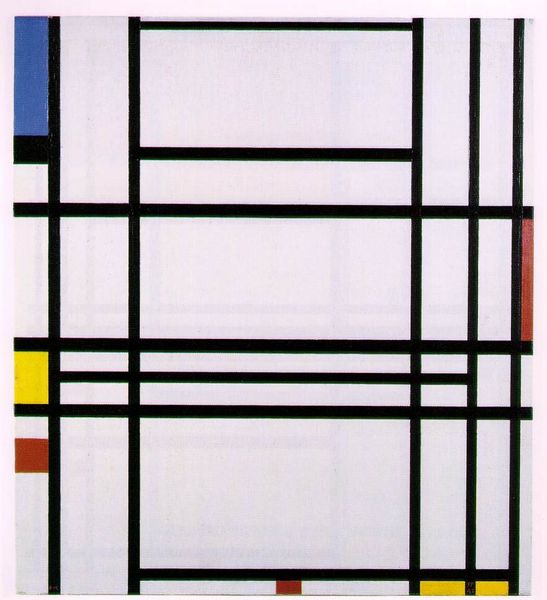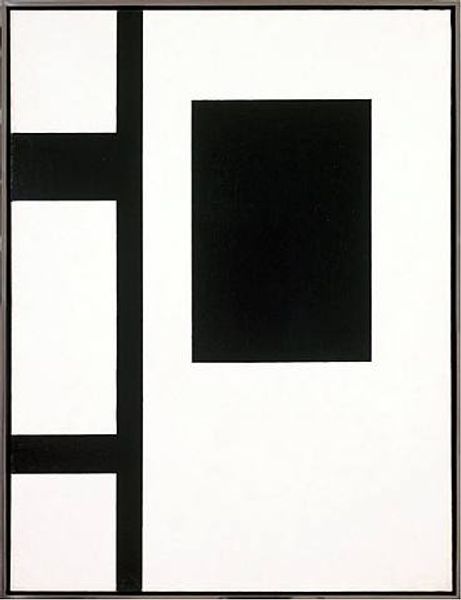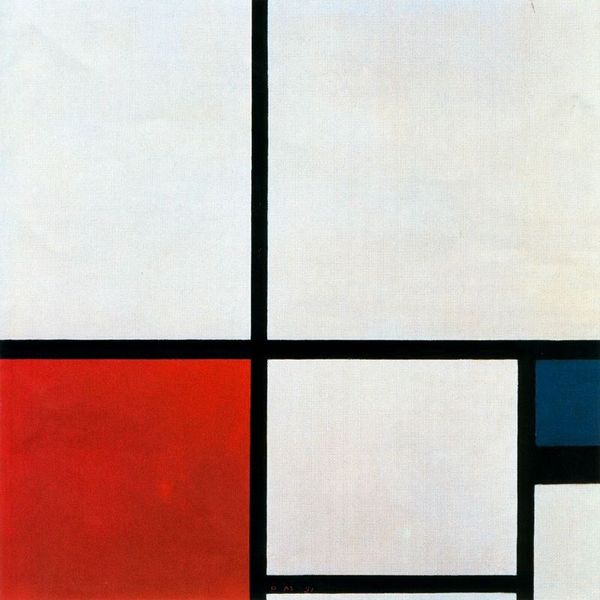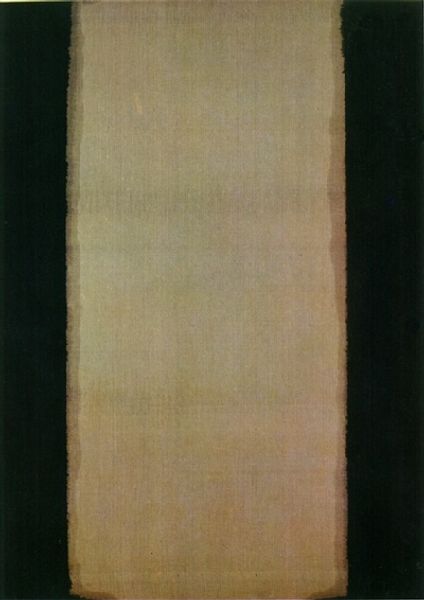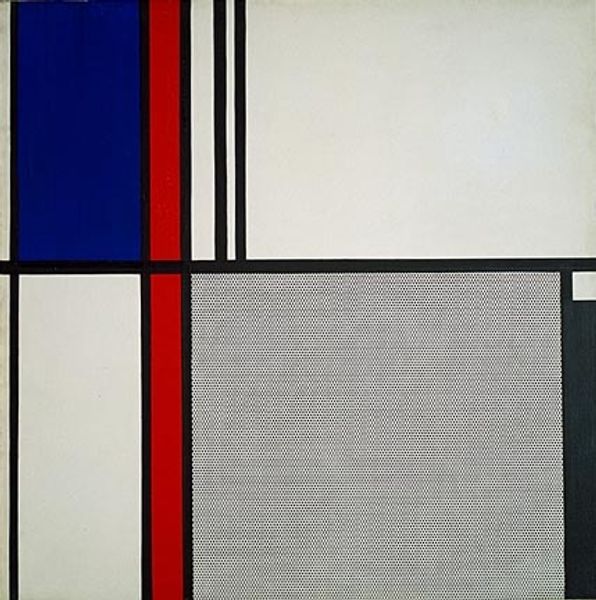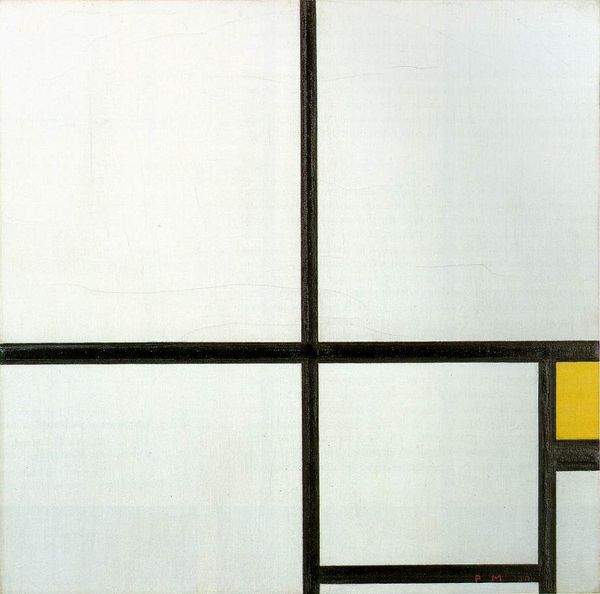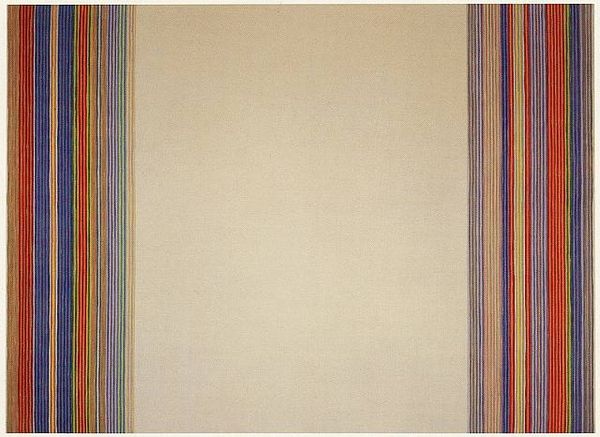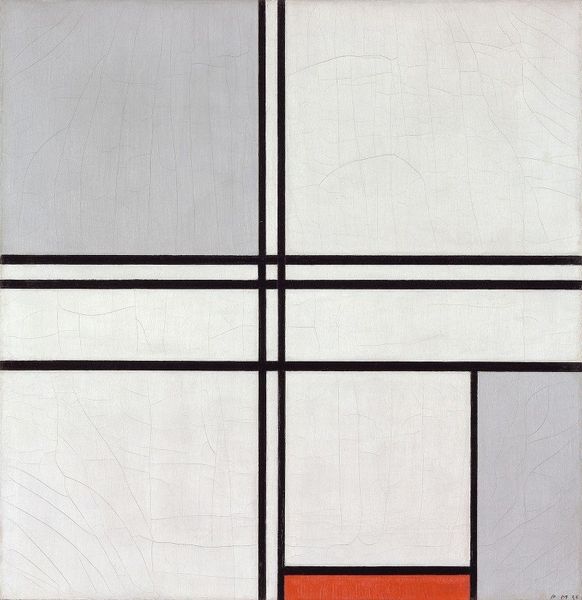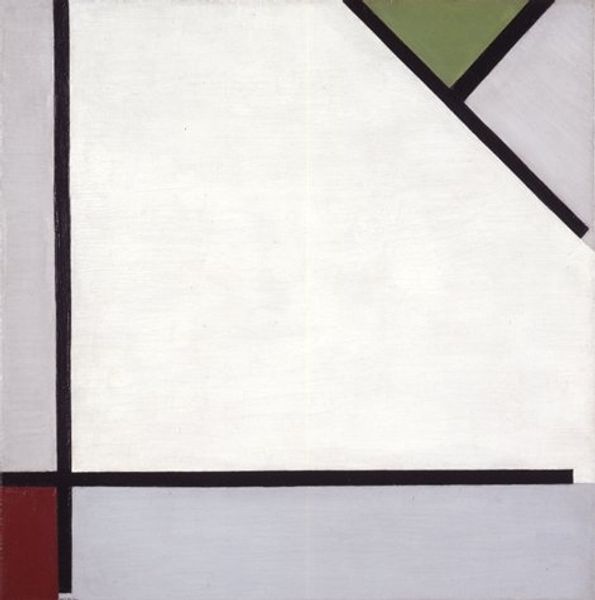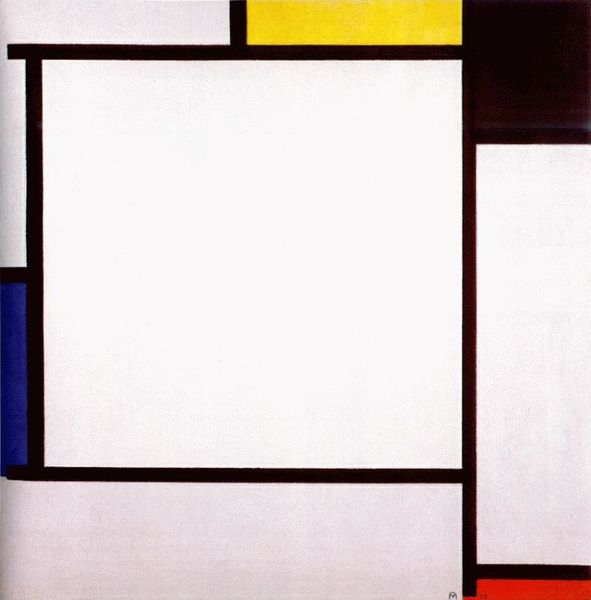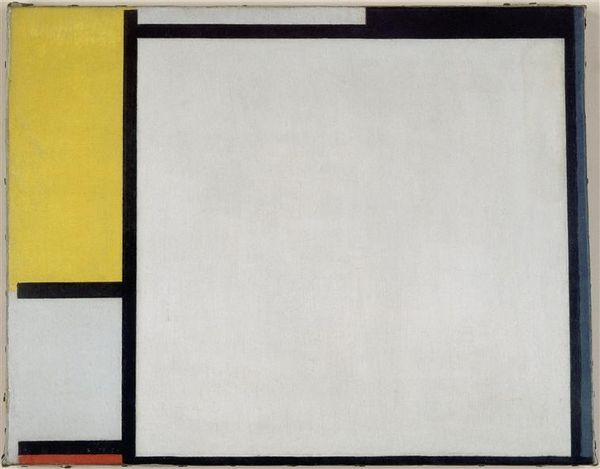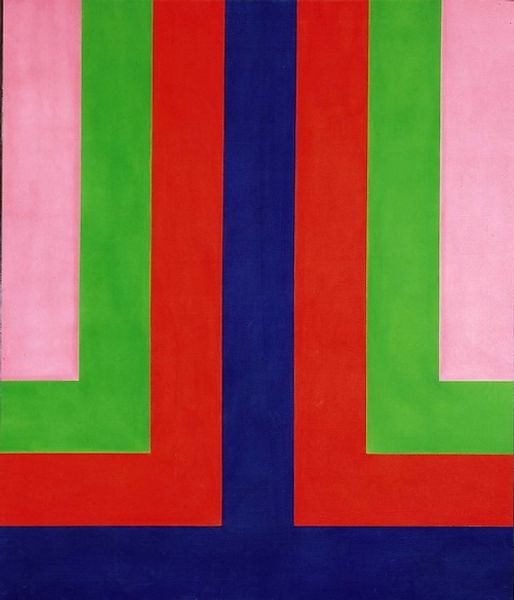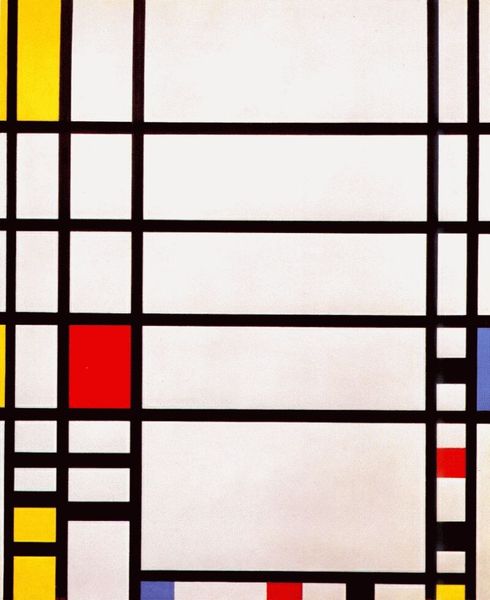
painting, oil-paint
#
de-stijl
#
abstract painting
#
painting
#
oil-paint
#
geometric
#
geometric-abstraction
#
abstraction
#
line
#
modernism
Dimensions: 101 x 51 cm
Copyright: Public domain
Editor: So, this is Piet Mondrian’s "Composition No. III Blanc-Jaune" from 1942. It's an oil painting, all lines and blocks of colour. It feels so simple, almost manufactured…but in a pleasing way? What do you see when you look at it? Curator: I see a distilled investigation into the means of artistic production. Mondrian limits his materials to primary colours, black lines, and white space, stripping away anything he might have deemed superfluous. Think about the paint itself, where did it come from? How were the pigments extracted and combined to make paint? Editor: You're making me think about the labor that goes into even a simple painting like this! Curator: Exactly. The evenness of the paint application, the perfectly straight lines… these suggest a conscious suppression of the artist’s hand, pushing it toward the realm of industrial production. De Stijl artists like Mondrian sought to integrate art into everyday life through industrial methods, challenging what high art could be by engaging directly with the materiality of paint and the role of artistic labor. Do you see this at all? Editor: I do, especially considering how much painting at the time emphasized the artist’s expression through brushstroke. This is almost…anti-expressionist? Curator: Precisely! Mondrian is critically examining how we create, challenging the art market’s elevation of individual "genius," by emphasizing simplified, almost mechanical, methods. It compels us to reflect on art's relationship with labour. Editor: Wow, I never thought about it that way. Now I am also thinking, how was canvas created, the impact of this artwork from production’s perspective. Curator: Indeed! Mondrian’s art, seemingly detached, brings awareness of the cultural background that informs artistic practice and shapes materials. Editor: That is a refreshing viewpoint. Now I see art not just as pretty colours but production value chain! Thank you!
Comments
No comments
Be the first to comment and join the conversation on the ultimate creative platform.
